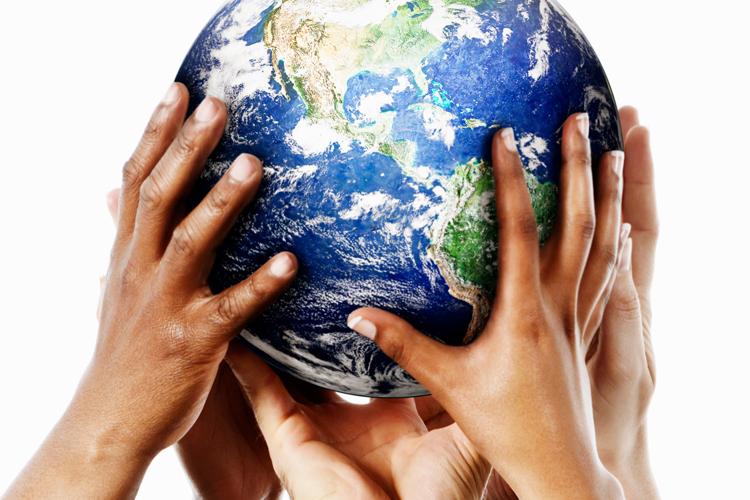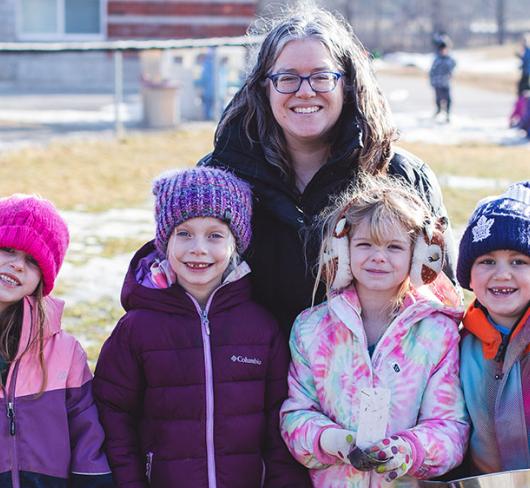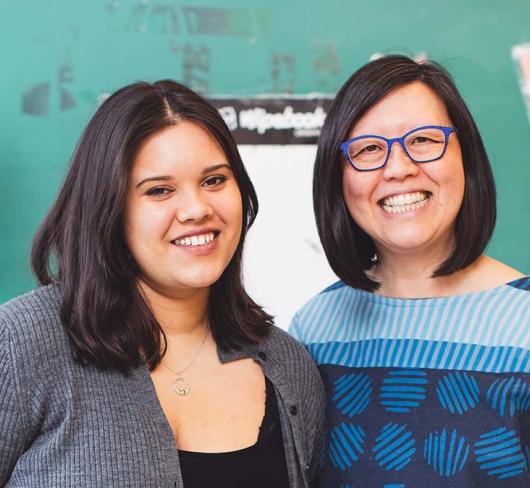
Earth Month: If Not Now Then When?
Don’t let another Earth Month pass without critically reflecting on the contribution you can make to our planet. Teachers can transform the world. We see dozens of students regularly throughout the course of a year. Roald Dahl wrote, “Somewhere inside all of us is the power to change the world.” Our job is to unlock this power. Make this your theme for Earth Month. We can develop and practice the changes we wish to see in the world in our classrooms. How do we do this? Voice articles show that many of us are teaching in transformative ways. But we can do more. I am inviting all teachers to reflect on five ideas to help students develop skills to create a sustainable future.
1. Change Your Words, Change Your World
The World Wildlife Federation’s 2014 Living Planet Report estimates that Canadians use 3.7 times their share of the Earth’s annual productivity. If we are to create a sustainable future, each one of us will need to interrupt our ‘business-as-usual’ lives and make the Earth our priority. The life of a teacher is busy, have we given ourselves even five minutes to reflect on our shared responsibility as global citizens of planet Earth? Write down 10 words that reflect contributions to a sustainable future you want to foster in your class. Share them with your students and identify the five you agree are the most important. Keep these words visible in your classroom. How are you fostering those goals? Changing the world starts with changing your world.
2. Opportunity
Our role as ‘guide on the side’ is to create the opportunity for our students to explore, create, connect, discover and feel. A great place to start during Earth Month is with the United Nation’s (UN) Global Goals. In September 2015, the UN developed 17 goals to end extreme poverty, fight inequality and combat climate change by 2030. One hundred and ninety-three countries signed on. The UN has created a colorful website (globalgoals.org) that has great videos and celebrity endorsements from Ai Weiwei, Bill and Melinda Gates, Kid President, Malala Yousafzai, Matt Damon, One Direction, Stephen Hawking and Stevie Wonder, to name a few. This is an initiative that students feel important being a part of. Supported by the teacher and parent resources available through GlobalGoals.org there’s no telling how far students can go. In grades 5 and 6, I’ve seen a student create a gender equality dance, while another created a petition on change.org (shout out to “Kids say no to palm oil!”) asking her peers to stop using products like Doritos and KitKat bars. Students love connecting with the public in the form of emails to newspapers, interviews with local food bank volunteers and creating email templates for their peers to send to government officials. One student created a three-level video game demonstrating three major ways our oceans are being destroyed. The player over-fished to move onto the next level and had to dodge plastics as a fish to move onto the next. Students sold handmade holiday cards with proceeds going to First Nations youth and many students personally decided to take on waste challenges with their family or challenged us as a class. The passion and potential in students never fails to amaze me.
3. Honouring Diversity and Building Community
“We cannot solve our problems with the same thinking we used when we created them.” – Albert Einstein
We need to ensure we are actively listening to a diversity of voices if we are to build communities that work together to find creative solutions to climate change. Honouring diversity in a classroom brings to life a thread seen throughout the curriculum: exploring multiple perspectives. While it is critical to “expose students to materials that reflect the diversity of Canadian and world cultures, including those of Aboriginal peoples,” (Ontario Language Curriculum, Ministry of Education) students must also be taught the skills necessary to work together with people of varying opinions. Jeanne Gibbs’ Tribes process, outlined in Tribes: A New Way of Learning and Being Together, is hands-down my favourite resource. I use the activity matrix to find a simple exercise to target foundational skills from communication to inclusion and trust building. The ‘Paraphrase Passport’ helps students experience the difference between authentically listening to someone versus waiting for them to finish so you can talk. ‘Client-Consultants’ builds trust and honesty as small groups ask for advice. Community circles reinforce the value of each voice in your class. We have classrooms full of thinkers, doers, seers, listeners, speakers, researchers and creators, and we need to empower them to build a sustainable community.
4. Positivity
Fill your classroom with positive energy. It’s easy for students to become overwhelmed, even disengaged, given the negative media they consume. Be sure to use Earth Month to celebrate environmental successes found in your classrooms, communities and across the globe. A good place to look is Chris Hadfield’s Twitter account (@Cmdr_Hadfield). In a series of tweets at the end of 2016 he highlighted 46 positive advances from around the world. Here are several examples:
A solar powered airplane flew across the Pacific Ocean for the first time, highlighting a new era of energy possibilities.
- Costa Rica’s entire electrical grid ran on renewable energy for more than half the year.
- British Columbia protected 85% of the world’s largest temperate rainforest in a landmark environmental agreement.
- Fossil fuel emissions flat-lined in 2016, and the Paris agreement became international law faster than any previous US treaty.
- Manatees, arguably the most enjoyable animal to meet while swimming, are no longer endangered.
- A success here in Canada is the federal government’s decision to ban microbeads, the tiny plastic spheres found in personal care items which are accumulating at an alarming rate in our waterways and wildlife.
To encourage positive thinking in your classroom, hang chart paper and encourage students to write on it. Ask for positive messages or what does the earth mean to you.
5. Resources for the 21st Century
If you and your students are ready to change the world and are looking for examples, lessons or ideas for action projects, check out Resources for Rethinking (R4R.ca) developed by Learning for a Sustainable Future. This carefully created database takes environmental teaching into the 21st century. The many classroom-ready resources examine the environmental, social and economic aspects of important issues in our world today through action-oriented, interdisciplinary learning. The R4R search engine directed me to National Geographic Canada’s activity, Making the Decision about the Construction of an Oil Pipeline through British Columbia. This junior/intermediate resource has students identify the core stakeholders, their role and their impact in the creation of the pipeline, as well as the intended and unintended consequences of the decisions they make. All information, handouts and templates are provided free! The Great Canadian Shoreline Cleanup: K to 3 resource invites children to participate in a variety of water stewardship activities including constructing a shoreline, exploring play puddles, locating water in their local environments and discussing ways humans impact water. You can easily sort the resources by themes ranging from endangered species to human population dynamics. Don’t stress over creating and planning new activities; they are here.
If not this Earth Month, then when? Future generations will ask you what you were doing, what will you say?
Sarah Lowes is a member of the Halton Teacher Local.

